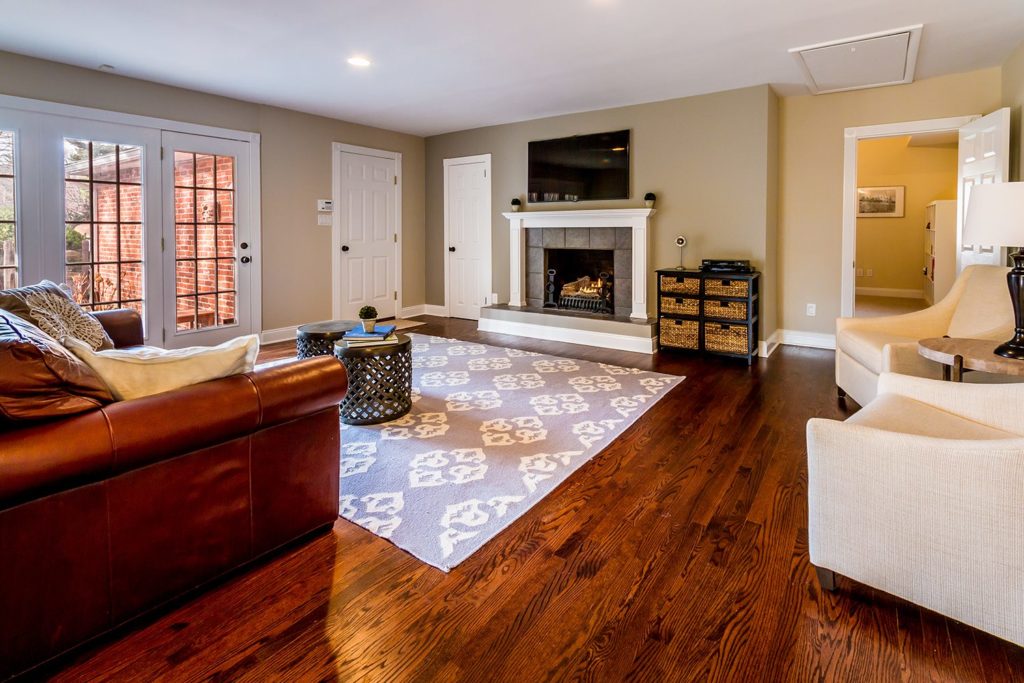For Cherry Hill homeowners looking to refresh their interiors with a new paint job, it’s essential to remember that the final outcome isn’t just about the chosen color or even the quality of the paint. Success largely hinges on the prep work. “What kind of preparation?” you might ask. Good question, and keep reading!
Understanding the Room’s Unique Needs
Every room comes with its own set of challenges, so before you put brush to wall, it’s important to evaluate the space. A few preliminary questions you could ask:
- How big is the room?
- Does natural light flood in, or is it mostly artificial?
- Is there evidence of past paint jobs or patches on the walls?
- Are there holes, scratches or any other damages?
These considerations will guide the preparation process and help you in your decision making (they may save you some unnecessary trips to the store too!).
The Essential Tools and Materials
Quality tools can make a world of difference. Start with sturdy brushes, reliable painter’s tape, drop cloths to protect floors, patching compound for wall imperfections, and sandpaper for smoothing surfaces. Remember, while it might be tempting to skimp on prep tools to save money, quality materials can save time and deliver a more polished result.
Steps to Proper Preparation
Okay, now we can get to the real meat and potatoes of painting prep. In most cases following these simple steps will have a direct impact on the final quality of the job.
Cleaning the Walls: Dust, dirt, and grime can impact the paint’s adherence. Use a gentle cleaning solution and ensure the walls are spotless and dry before moving to the next step.
Repairing Imperfections: Address any wall damage. Fill holes, sand bumps, and ensure the surface is as smooth as possible.
Priming: A primer sets the stage for your paint, ensuring even absorption and color display. It’s the bridge between the old wall and the new paint.
Taping and Covering: Precision is key. Tape off areas that you don’t want to be painted, like trim or outlets, and use drop cloths to protect floors and furniture.
Common Mistakes to Avoid
As straightforward of a task as interior painting may seem to be, small mistakes can sometimes end in significant loss. To save you the potential headache, here are some common mistakes to avoid:
Using Low-Quality Brushes and Rollers: Cheap brushes and rollers can lead to streaks, uneven coverage, and an overall subpar finish. Invest in good quality brushes and rollers for a smoother application.
Not Allowing Proper Drying Time: Rushing the process and not allowing each coat to dry thoroughly can result in a less durable finish. Follow the manufacturer’s recommended drying times.
Not Mixing Paint Thoroughly: If you’re using a custom color or paint that has been sitting for a while, it’s important to mix it well to ensure consistent color and texture.
Skipping Primer: Using a primer is crucial, especially if you’re painting over a dark color or a surface that hasn’t been painted before. It helps the paint adhere properly and can improve the final result.
Hiring a Painting Company? Here’s a Tip!
If you’re considering hiring professionals for your interior paint job, that’s not a bad idea! But here’s a quick tip: always evaluate their estimate closely. Ensure you have a clear understanding of the extent of preparation they plan to undertake. Does their service include wall cleaning? What about sanding, priming and protection for your furniture and floors? A comprehensive breakdown of these preparatory steps not only ensures there are no surprises, but it also provides an insight into the thoroughness and professionalism of the painting company. In the end, whether you are taking on your interior paint jobs yourself or hiring a professional, it’s always a good idea to do your homework!
Frequently Asked Questions
Q: Can I paint over wallpaper? A: It’s possible, but not always advisable. If you decide to, ensure the wallpaper is well-adhered, clean, and primed appropriately.
Q: How long should I let the primer dry before painting? A: It varies by brand, but typically, 24 hours is a safe bet. Always refer to the manufacturer’s instructions.Q: Is it necessary to sand between paint coats? A: Light sanding between coats can help achieve a smoother finish by removing any debris or paint drips, but it’s not always necessary. It largely depends on the finish you desire.

